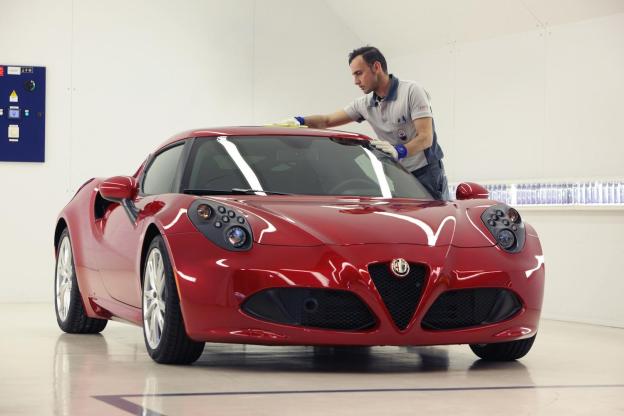
Two weeks ago, we told you that the Alfa Romeo 4C “compact supercar” went into production. We detailed some of the body structures and materials at the core of its lightweight mentality. But what will power it, you wonder? We now know.
Although Alfa has long told us its turbocharged 1.75-liter inline four-cylinder gasoline engine would power the 4C. What it’s been reluctant to tell us, though, is how much power the mid-mounted engine would produce.
We’ve learned the oddly sized four-cylinder will make 237 horsepower. Based upon the engine in the European Giulietta, the 4C’s engine has been formed from alloy instead of iron, which saves 65kg.
“We could see a situation where a 4C driver might easily be quicker on tight, twisting roads, like a mountain pass, than a supercar like the Bugatti Veyron because of its agility and compact size,” Alfa’s European sales boss, Louis-Carl Vignon, told Autocar.
If the 4C is the success that Alfa hopes it will be, more engine options could be offered down the line, including a V6. As it stands, though, the four-cylinder 4C will be pretty peppy, making a 0-62mph run in 5.0 seconds and top speed of 155.
As we’ve mentioned before, Alfa was obsessed with saving weight on the 4C. This pushed to designers not to include any sort of power steering – hydraulic or electronic – so it should be a struggle to parallel park.
Also, the air conditioning system won’t be automatic or dual-mode, like so many performance cars on the market today. With a manual adjustable A/C, Alfa saved the weight of a climate control ECU.
The more we learn about the 4C the more we’re intrigued to drive it. Claiming better handling than a supercar is no small declaration. We’ll have to see if the quirky Italian can hold up.


